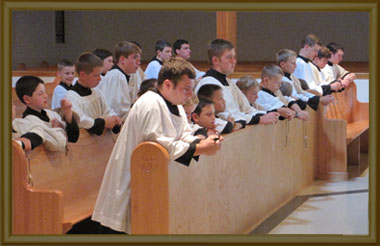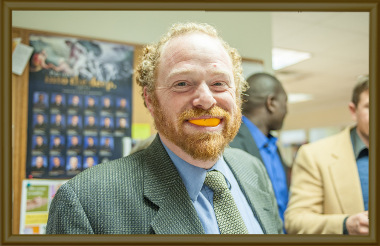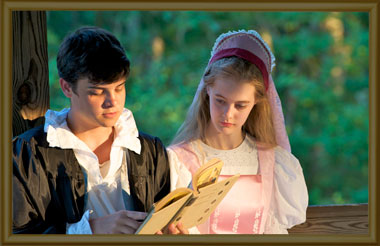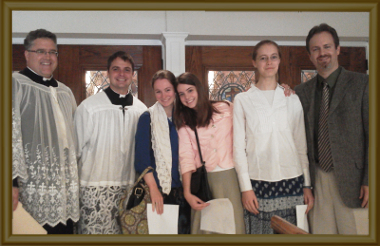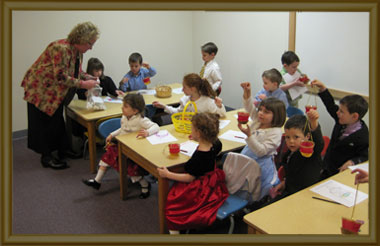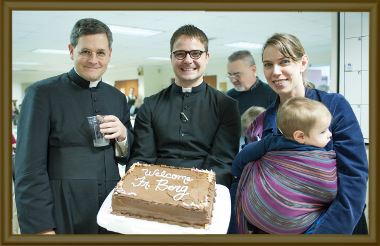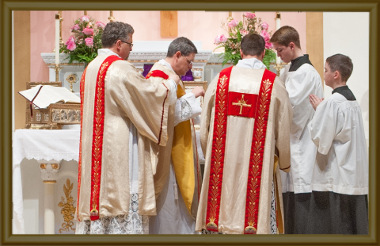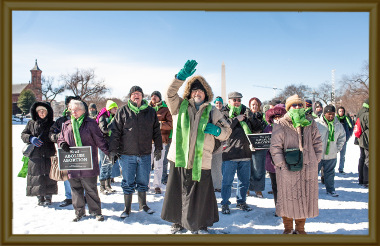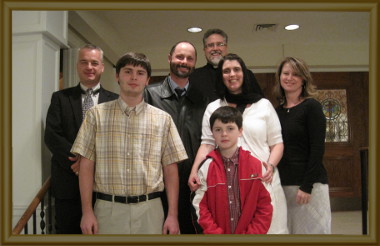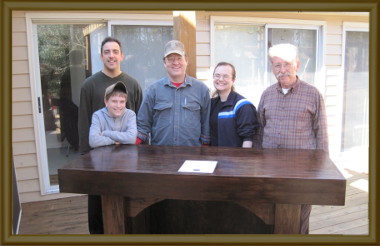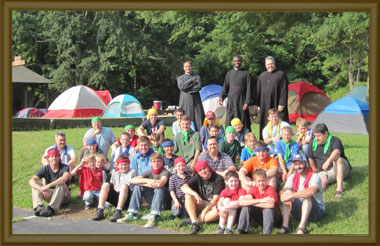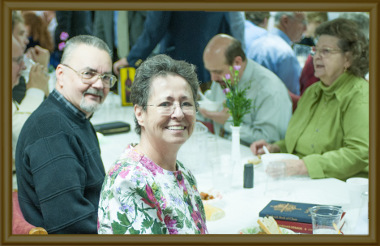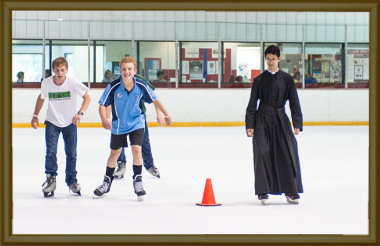What to expect when attending Mass at St. Joseph's
A Newcomer's Guide
by Michael Bussman, parishioner
December 8th, 2013
I first came to St. Joseph's parish a few months ago. I admit I was a little nervous; you may be also. I was unfamiliar with the Traditional Latin Mass and not sure what to expect at St. Joseph's in Richmond. Here are a few observations that I have made from the perspective of a new parishioner which may ease your mind. I hope these may be helpful both to the curious visitor or someone seeking a new parish home.
- Come and see! The best piece of advice that I can offer to you is please don't be afraid. If you desire a prayerful liturgy then come and see! I am extremely thankful that I came. There was a newness to this ancient Mass that was, for me, both refreshing and beautiful.
- Reverence in Church. What first impressed me was the deliberate reverence here. I noticed it is very typical for all to bless themselves with holy water and to genuflect to the tabernacle coming and going. There is a peaceful silence in the Church as we prayerfully prepare for the celebration of the Mass.
- A welcoming friendliness. After Mass, though, many parishioners move to the vestibule or social hall for joyful and friendly conversation. As a new member of the parish, it has been my experience that everyone was welcoming and helpful. Within my first few weeks in the parish I was warmly welcomed personally by both of the priests.
- What to wear during Mass? On Sundays you will notice that people seem to dress up a little. And while the range of attire makes it clear there's no dress code, the level of modesty is noticeable. In general, men and boys are wearing 'business casual', or jacket and tie. Women and girls seem to prefer skirts and tops without bare shoulders. Many women also choose to wear a hat or chapel veil.
- How is the Traditional Latin Mass different? A few years ago Pope Benedict XVI called this Mass the "Extraordinary Form of the Roman Rite." Both the Extraordinary and the Ordinary Forms are re-presentations of the Sacrifice on Calvary, and therefore both forms are equally valid and legal in the Catholic Church. St. Joseph's uses the Missal of 1962 published by Blessed John XXIII. It is an ancient, venerable, rich and beautiful Mass. If you are familiar with the Ordinary Form (English Mass), you will notice many similarities in the order of prayers, readings, etc.
- How to follow along during the Mass? Each pew back has a missalette helpful to the beginner. These present the whole Mass in both Latin and English on facing pages, along with some explanatory notes and pictures. Your first time will be challenging, but don't worry, just follow everyone else in standing or sitting, etc. It's still possible to pray very well. I came from an English Mass background and was surprised by how much was similar, and yet, also by how much was different. It does take some time, but already after a few short months I feel like a pro. Many parishioners have invested in their own 1962 Hand Missal, which has all the readings for the entire Liturgical Year, including Sundays, weekdays, and feast days, in Latin and English. Several editions available in the Parish Gift Shop.
- Is the homily in Latin? The homily is in English, and while the Epistle and Gospel readings are read first in Latin, then read in English before the homily. Parish announcements are made immediately before the homily begins.
- Receiving communion: The Holy Eucharist is offered under one species, the host, which the priest places on your tongue while you are kneeling at a communion rail. Unlike a typical English Mass, you do not respond with Amen to the priest prior to receiving the Sacred Host. I watched communion my first week just to see how it worked, and the following Sunday I felt comfortable going to the rail with everyone else. It was easier than it looked. Those who have difficulty kneeling are welcome to remain standing. Low gluten hosts are available, too.
- Confession frequently available: The Sacrament of Confession is widely available: 30 minutes prior to all Masses, even during the week. On Sundays the lines are very long. Parishioners are encouraged to participate frequently. Confession will be similar to how you have experienced it elsewhere, except the absolution is given in Latin, as you recite the Act of Contrition. Have no fear: you do not need to confess in Latin!
- In summary… come and see! The catechism describes the Mass as both a view back into history and forward into eternity. The Last Supper and the Crucifixion on Calvary are real historical events which are re-presented for us in the Mass. The Mass is also a foretaste of the eternal and perfect heavenly liturgy. It has been my experience that these natures of the Mass, the historical and the heavenly, are present in the Traditional Latin Mass in a refreshing and spiritually enriching way. I hope that will be your experience as well. Come and see!
